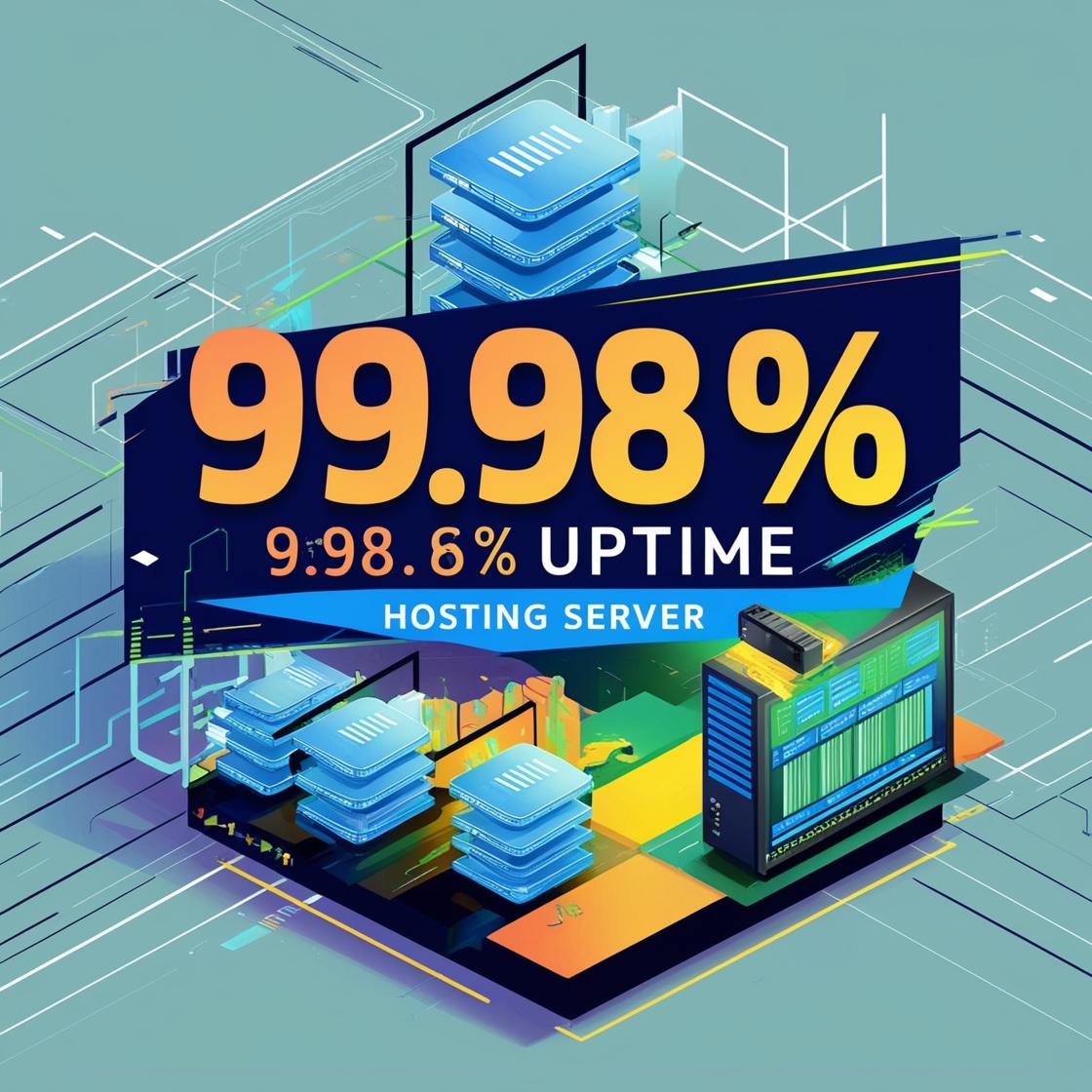If you own or manage a website, ensuring that your users can always access your site should be one of your top priorities. This is where the term uptime comes into play. Uptime refers to the amount of time your website is accessible and is usually expressed as a percentage. Keeping your website continuously accessible is extremely important for user experience, SEO performance, and reliability. So, what is uptime, why is it so important, and how can you keep your website’s uptime rate high? You can find the answers to all these questions in this article.
İçindekiler
- 1 What is Uptime?
- 2 Why is Uptime So Important?
- 3 Ways to Increase Your Website’s Uptime Rate
- 3.1 1. Choose a Reliable Hosting Provider
- 3.2 2. Use Backup Power and Network Resources
- 3.3 3. Use a CDN (Content Delivery Network)
- 3.4 4. Implement Load Balancing
- 3.5 5. Regular Backup and Recovery Plans
- 3.6 6. Server Monitoring and Maintenance
- 3.7 7. Use DDoS Protection
- 3.8 8. Minimize Planned Maintenance
- 4 Uptime Monitoring and Reporting Tools
- 5 Conclusion
What is Uptime?
Uptime refers to the time a website is continuously accessible over a certain period. It is often expressed as a percentage, such as 99.9%, and shows how long a website is accessible each month or year. For example, 99.9% uptime means your site theoretically experiences only a few minutes of downtime each month or about 8 hours a year.
Downtime, on the other hand, defines the time a website is inaccessible due to various reasons. These interruptions can be caused by planned maintenance, server failures, network connectivity issues, or cyber-attacks. The goal is to keep the uptime rate as high as possible while minimizing downtime.
Why is Uptime So Important?
The uptime rate of your website plays a significant role in its success and reliability. Below are the main reasons why uptime is critical for your website:
1. User Experience
When a user tries to access your website and can’t reach it, it leads to a negative experience. Users generally expect quick results and may turn to alternatives if your site does not load. This can lead to traffic loss and potential customer loss.
2. SEO Performance
Search engines prefer continuously accessible sites to provide the best experience to their users. A website that frequently experiences downtime is negatively evaluated by search engines like Google and can drop in rankings. This can adversely affect your organic traffic.
3. Business Reliability
Continuous accessibility is especially important for e-commerce sites. Downtime on your website can lead to revenue loss and damage to customer trust. A high uptime rate enhances the reliability of your business and ensures that users can shop with confidence.
4. Competitive Advantage
A website with a high uptime rate provides an advantage over your competitors. If users can access your site smoothly at all times, it increases the reliability of your site and makes it the preferred platform compared to your competitors.
Ways to Increase Your Website’s Uptime Rate
There are various steps you can take and technologies you can use to maintain a high uptime rate. Here are the most effective ways to ensure your website’s continuous accessibility:
1. Choose a Reliable Hosting Provider
Your website’s uptime rate largely depends on the quality of your hosting provider. Providers that offer reliable hosting services monitor their servers regularly, resolve performance issues quickly, and provide backup solutions. Choosing a provider that offers a 99.9% uptime guarantee ensures that your website is continuously accessible.
2. Use Backup Power and Network Resources
Server outages can often be due to power issues. Ensure that data centers have backup power sources (UPS and generators). Also, using backup internet connections can help maintain high uptime in the event of network issues.
3. Use a CDN (Content Delivery Network)
CDNs store your website’s content on servers around the world, allowing users to receive content from the nearest server. This not only increases speed but also allows another server to take over in case of server issues in a particular region. Thus, your site remains accessible even during server outages.
4. Implement Load Balancing
Load balancing distributes incoming traffic across multiple servers to prevent any single server from becoming overloaded. This way, if one server encounters issues, the other servers can take over, preventing downtime. This method is particularly effective for high-traffic websites to maintain a high uptime rate.
5. Regular Backup and Recovery Plans
Implementing regular backup and disaster recovery plans is essential to deal with situations like data loss or server failures. Backups ensure that your website can be quickly restored in case of an issue, minimizing downtime.
6. Server Monitoring and Maintenance
Regularly monitor the status and performance of your servers. Server monitoring tools allow you to detect potential issues early and respond quickly. Also, announcing planned maintenance in advance and conducting it during low-traffic times minimizes the impact on your users.
7. Use DDoS Protection
DDoS attacks can crash a website by sending an overwhelming amount of traffic. Using DDoS protection services can safeguard your site against such attacks and keep your uptime rate high.
8. Minimize Planned Maintenance
Your site may need to be offline during planned maintenance. However, performing these maintenance tasks during off-peak hours and keeping them as brief as possible minimizes the impact on your users.
Uptime Monitoring and Reporting Tools
Various tools can be used to continuously monitor and report your website’s uptime rate. These tools track the accessibility of your site and notify you in the event of an outage. Some of the most popular uptime monitoring tools include:
- Pingdom: Monitors the uptime status of your website and sends you instant notifications during outages.
- UptimeRobot: A free tool that provides regular reports on the status of your site and tracks outages.
- Site24x7: Monitors server performance, tracks uptime, and offers extensive reporting.
- StatusCake: Provides services like uptime monitoring and speed testing to continuously observe your site’s performance.
Conclusion
The uptime rate of your website is extremely important for user satisfaction and reliability. Maintaining a high uptime rate enhances the accessibility of your site, improves your SEO performance, and preserves the reliability of your business. You can increase your uptime rate and ensure a continuously accessible website by adopting strategies such as selecting a reliable hosting provider, using backup solutions, leveraging CDN and load balancing technologies.
Uptime is a crucial measurement that indicates the uninterrupted accessibility of a website and is a factor that must be maintained at the highest level for your site to succeed.






